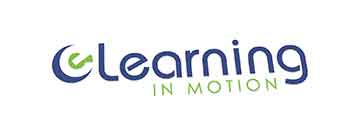The growth of eLearning programs make it necessary to possess a system that can manage access to students, instructors, managers, and other stakeholders, to educational content that may or may not count towards a grade or some other achievement. This system is commonly known as learning management system, or LMS. No eLearning program could work properly without one; they have become essential since they can do more than provide secured access to educational content.
On the other hand, educational content could be developed outside a LMS. There are many tools used to create engaging educational and training materials than can be uploaded into a LMS, which can manage access to it. Since those tools became available, there was no secure or straightforward way to insert that content into the LMS platform. Surely, you could just post the module in some server and insert the link to it in the LMS, but where is the fun in that? You need to communicate the score to the LMS, if those modules carry a grade or some other kind of evidence of achievement, it would be impossible to post that in some kind of scoreboard, unless the LMS and the module could communicate somehow.
This is the reason the big wigs of online education in the military decided to create some kind of standard to make this possible, and they came out with the first version of such standard, called SCORM. Shareable Content Object Reference Model, or SCORM, is an object reference model, in other words, is a set of instructions that allow some of the content or some segments of an object to be shareable with other objects such as a LMS. In many cases, the shareable objects are courses developed using authoring software such as Articulate Storyline, Captivate, or Lectora, among others. If you are curious about the implementation of the standard, you may need to learn a web markup language, which is similar to HTML, called XML or eXtensible Markup Language. Unlike HTML, XML allows for the transport of data within the content, which is then communicated to the LMS.
What else does an LMS does?
An LMS has tools that allow instructors develop a complete course that can last many months or even years. In no particular order, most LMS systems contain the following tools:
- Quizzing
- Module builder
- Assignments
- Discussions or chat system
- Video conferencing
- Gradebook
- File system
These are not minimum requirements, some LMS systems would lack one of the above tools, others may have a system with several tools not mentioned in this list.
What is the connection between LMS and SCORM?
All the previously mentioned systems in the LMS are integrated and work together inside this environment. In many cases a module, package, or external quiz was developed using a different system such as an authoring tool. Examples of these are Storyline, Captivate, Lectora, among others. All these authoring systems have a publishing option called SCORM, this makes the published material compatible with the LMS.
Before SCORM no standard existed for the development of eLearning materials. The US Government, through its military branch, decided to create a series of standards with the purpose of ending the chaotic development of educational materials that could not work across systems the military has for education and training. SCORM is based on those standards, they are not mandatory and the LMS market has pushed many authoring tool vendors into making their published packages SCORM compliant.
How does SCORM work with the LMS?
When you publish a course using an authoring tool using the LMS option, or SCORM option, the software prepares the content for the interface and the LMS API (Application Program Interface) will grab that information to integrate the object into any of their designated tools.
How authoring tool vendors interpret SCORM has created another issue. Packages produced with one authoring software cannot be transferred to other system developed by a different company (you cannot open an Articulate module using Adobe Captivate, for example), it will not matter if both are SCORM compliant. If you have a legacy package and the authoring tool is not in the market anymore, you will have to start development from scratch.
Which kind of data is passed to the LMS is another problem. Most LMS systems have definite rules on the type of data they can accept from a SCORM package. In many cases, the promise of richness of data from the interaction of a user with the package falls short just because the LMS would not let the package pass that information to the system, and the data is just lost. CanvasMed, for example, only allows for the final grade in a quiz to be passed to the LMS in the form of a grade posted in the Gradebook.
A last note SCORM is still evolving and it might change names soon (TinCan or xAPI are two proposed names), it is slowly taking a central role in eLearning development for LMS integration. LMS systems are catching up and soon you will be able to integrate more information into the LMS. If authoring tool makers agree on using the same standard, portability of SCORM packages could become a reality, this would mean a step forward towards universal eLearning. But we are not there yet.
As always, find us in social media. You can share this content by using the buttons below. If you have questions and comments, use the form at the bottom of this page, or contact me directly, and I will get back to you as soon as I can. Thank you for reading this post.

